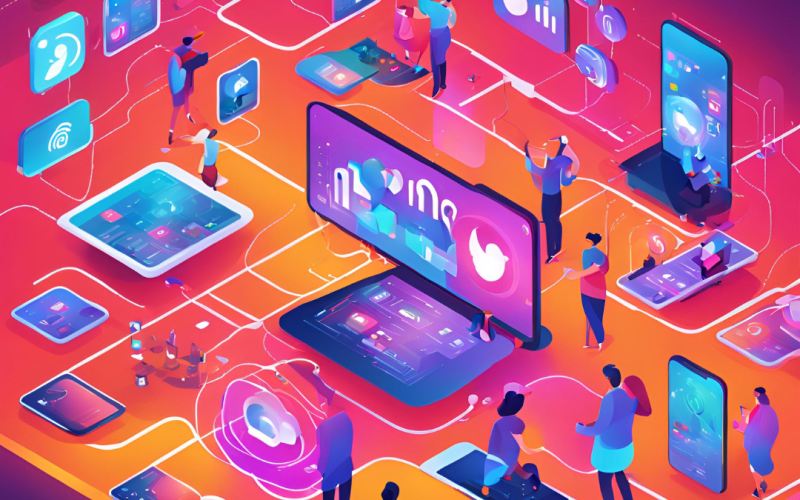Table of Contents
Does your small business need a copywriting expert? Contact us today to see how we can grow your business online!
What is copywriting?

Copywriting is the art of writing that sells. It is a creative combination of psychology, sales, and communication. It is persuasive, and its biggest goal is to get people to buy from you.
On one side, is the audience, and the other your product or service. The goal of copywriting is to get people to cross the bridge.
The study of copywriting is monumental in content. It could easily fill a hundred books. However, in order to better understand it, here is a quick, no-frills guide.
Enjoy.
Understand your buyer
Understand the reader, and the product or service. Look at what competitors are doing, as they can give you great insight. Google is your best friend!
Figure out who is the ideal customer. Study their personal and professional situation, and their deepest fears and desires.
People buy for fear or self-interest (Napoleon’s rule).
Understand their problems, questions, roadblocks, and results. (Copywriting Secrets (2019) Jim Edwards).
Copywriting strategy

What are the motives of the target audience? What would drive them to buy?
In Copywriting Secrets (2019) Jim Edwards explains there 10 reasons why people buy:
1. Make money
2. Save money
3. Save time
4. Avoid effort
5. Escape pain
6. Get comfort/pleasure
7. Achieve hygiene and health
8. Gain praise
9. Feel more loved
10. Increase popularity / social status
In Copywriter’s Handbook (2020) Robert Bly further states:
To be liked
To be appreciated
To be right
To feel important
To make money
To save money
To save time
To make work easier
To be secure
To be attractive
To be sexy
To be comfortable
To be distinctive
To be happy
To have fun
To gain knowledge
To be healthy
To gratify curiosity
For convenience
Out of fear
Out of greed
Out of guilt
This is the foundation of your copy!
Ask yourself, what are the features, and what are the benefits? A feature is what the service or product does. A benefit is how it solves a problem or improves the life of the buyer.
Then, tie these benefits together with the reasons people buy, mentioned above. This is how you reach people emotionally and psychologically.
To help you understand your overall strategy, create a one-liner:
Your customer’s problem + your solution = result (Marketing Made Simple (2020) Donald Miller).
Use power words to stir up emotions in the reader:
https://www.wordstream.com/blog/ws/2022/03/22/power-words
Use conversational wording that flows, use “you” not “I” or “we”. Speak in terms that are understandable and simple to read.
Use Unique Selling Points (USPs) if possible. These are aspects of your business that are special and unique. They are things that none of your competitors are doing. (Copywriting Made Simple (2020) Tom Albrighton).
Have a Value Proposition! Communicate the value your products or service can deliver to a customer. One great way to portray this is with a value stack. List 3 specific benefits side-by-side (Marketing Made Simple (2020) Donald Miller).
When pricing your products or services, stack value. Show with benefits why the value is greater than the cost.
Humans have always been engaged by stories on a tribal level. Tell a story with a beginning, middle, and end where you are the hero.
Beginning: Introduce a relatable character, someone from your target audience
Middle: Stir up a problem. Give a challenge, problem or threat for your character.
End: You solved the day! After your service or product, the character feels at ease.
Headline
Headline: Have a captivating headline! This is the most important part of your copy.
Use important benefits, ask a question, or give a command.
Try “just saying it”. [Product] is a [description] that helps you [action].
Answer 3 questions around your headline (Marketing Made Simple (2020) Donald Miller):
1. What do you offer?
2. How will it make your customer’s life better?
3. What do people need to do to buy it or work with you?
Are they in a stage of awareness, problem, or desire?
Write the headline to the target audience, not everyone.
Body
The AIDA principle is a timeless classic in copywriting. It is a way to get into the reader’s brain and give them a path to follow. It guides them in their buyer journey.
Attention:
The first step is to attract the attention of the reader. Use a stellar headline, as shown above, that tells the reader what they’re looking for and why they should want it.
Interest:
Once the reader is aware of the product or service, increase the potential customer’s interest level using benefits. Show potential customers what makes you awesome.
Desire:
Now you have the reader closer to the hook! The next goal is to make them desire what you have to offer. Use an emotional connection and show them how their life will improve after buying from you. Move them from thinking “I like it” to “I want it”. Activate “social proof” by showing testimonials, reviews, or case studies.
Action (CTA):
Now you really have them! The ultimate goal of all of this is to drive action. This can be a phone number, a download, a link, a map, or a direct purchase. Recap the main benefits and make your call to action clear and simple. Use scarcity by giving them a time limit, or create urgency by saying “Start Now!”. Reduce risk with a frequently asked questions section (FAQ).
Sprinkle in some persuasion

Robert Cialdini is an American psychologist famous for his research into the science of influence. He discovered different principles of persuasion. These are the black powder of your copy! Sprinkle them in to engage people’s minds.
Reciprocity
People feel the need to give back to others after they have received something first. Simply put, we return favors and debts.
You can give free stuff or samples to your potential buyer.
Scarcity
People want more of those things they can have less of.
For example, the use of deadlines or limits.
Authority
People follow the lead of credible, knowledgeable experts.
Consistency
People like to be consistent with things they’ve said or done.
Start with small commitments to get people active.
Liking
People are more likely to say “yes!” to someone they like.
Social proof
People look at others to decide their own actions.
Use testimonials, reviews, and case studies to get people to join the bandwagon.
Does your small business need a copywriting master? Contact us today to see how we can grow your business online!



